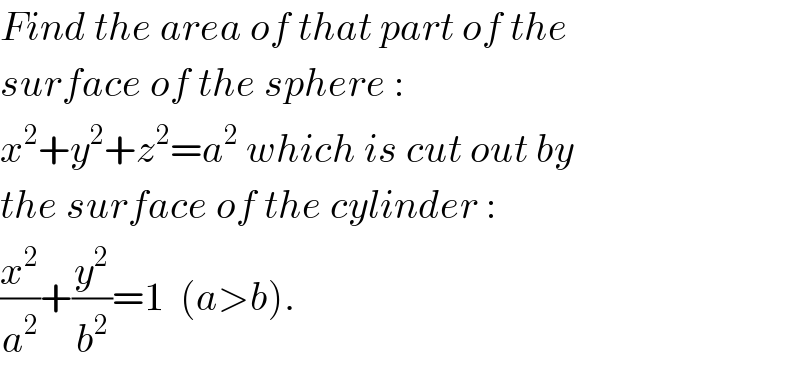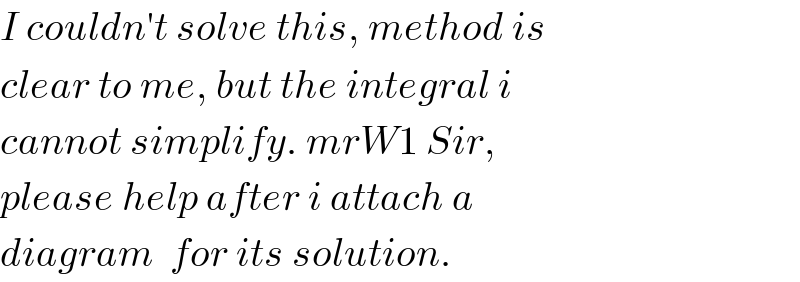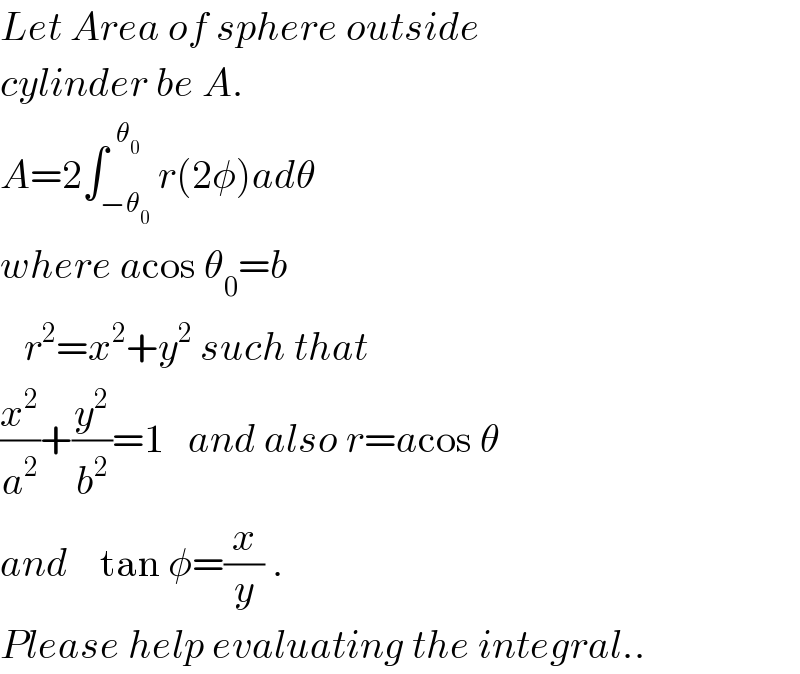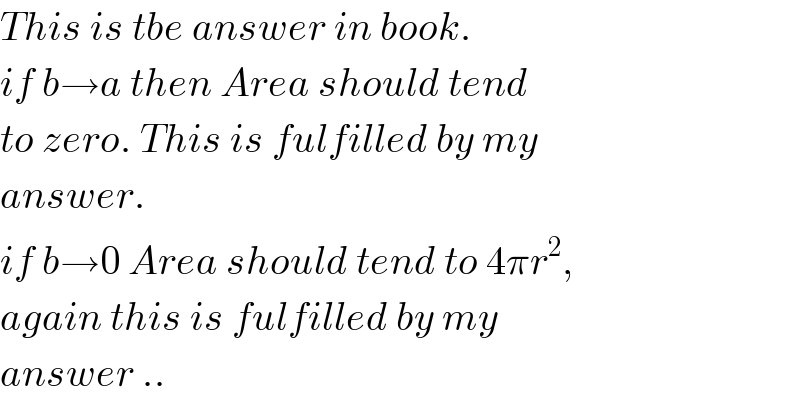
Question and Answers Forum
Question Number 20230 by ajfour last updated on 24/Aug/17

Commented by ajfour last updated on 27/Aug/17

Commented by ajfour last updated on 26/Aug/17

Commented by ajfour last updated on 26/Aug/17

Commented by ajfour last updated on 26/Aug/17

Commented by ajfour last updated on 26/Aug/17
![x=ytan φ x^2 +y^2 =y^2 (1+tan^2 φ)=r^2 ...(i( ((y^2 tan^2 φ)/a^2 )+(y^2 /b^2 )=1 y^2 (((tan^2 φ)/a^2 )+(1/b^2 ))=1 ....(ii) dividing (i) by (ii): ((1+tan^2 φ)/(((tan^2 φ)/a^2 )+(1/b^2 )))=r^2 ⇒ tan^2 φ=((((r^2 /b^2 )−1))/((1−(r^2 /a^2 )))) 1+tan^2 φ=((r^2 ((1/b^2 )−(1/a^2 )))/((1−(r^2 /a^2 )))) as r=acos θ sec^2 φ=((cos^2 θ(a^2 −b^2 ))/(b^2 sin^2 θ)) ⇒ cos φ=((btan θ)/(√(a^2 −b^2 ))) ⇒ φ=cos^(−1) (((btan θ)/(√(a^2 −b^2 )))) A=8a∫_0 ^( θ_0 ) r𝛗d𝛉 =8a(I) I=∫_0 ^( θ_0 ) acos θcos^(−1) (((btan θ)/(√(a^2 −b^2 ))))dθ =asin θcos^(−1) (((btan θ)/(√(a^2 −b^2 ))))∣_0 ^θ_0 −((−b)/(√(a^2 −b^2 )))∫_0 ^( θ_0 ) (((asin θsec^2 θ)dθ)/(√(1−((b^2 tan^2 θ)/((a^2 −b^2 )))))) and as acos θ_0 =b tan θ_0 =((√(a^2 −b^2 ))/b) , so I=0+ab∫_0 ^( θ_0 ) ((sec θtan θdθ)/(√(a^2 −b^2 −b^2 tan^2 θ))) =a∫_0 ^( θ_0 ) ((d(bsec θ))/(√(a^2 −b^2 sec^2 θ))) =asin^(−1) (((bsec θ)/a))∣_0 ^θ_0 =a[sin^(−1) ((b/(acos θ_0 )))−sin^(−1) ((b/a))] but acos θ_0 =b, so I=a[(π/2)−sin^(−1) (b/a)] and A=8a^2 [(π/2)−sin^(−1) (b/a)] A=4𝛑a^2 −8a^2 sin^(−1) ((b/a)). (still answer dont match) Help !](Q20416.png)
Answered by ajfour last updated on 25/Aug/17

Commented by ajfour last updated on 26/Aug/17

